Crypto Recap
Apr 6, 2025
Weekly Crypto Recap (March 31st - April 6th)
Nearly 400,000 FTX Users Risk Losing $2.5 Billion in Repayments
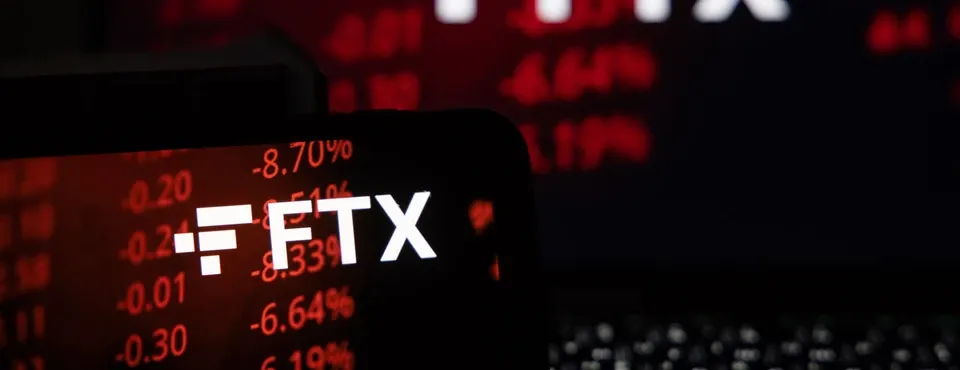
Background: Around 400,000 FTX users are at risk of losing $2.5 billion in crypto repayments if they fail to complete the KYC verification process before the June 1, 2025 deadline.
Key Points:
- The initial KYC deadline was March 3, 2025, but has been extended to June 1, 2025, due to a large number of users failing to start the process.
- Claims under $50,000 account for $655 million at risk, while claims over $50,000 total $1.9 billion.
- The next round of creditor repayments is scheduled for May 30, 2025, with $11 billion expected to be repaid to creditors with larger claims.
- FTX’s recovery plan anticipates that 98% of creditors will receive at least 118% of their original claim value in cash.
- Impacted users facing KYC issues are advised to email FTX support, create an account on the support portal, and re-upload the necessary documents.
Key Takeaway: FTX users who fail to complete the KYC verification risk losing significant funds, emphasizing the need for timely action to ensure eligibility for repayment.
Cathie Wood's Ark Invest Buys $13.4 Million Worth of Coinbase Shares

Background: Ark Invest, led by Cathie Wood, purchased 83,157 Coinbase (COIN) shares worth $13.4 million after the stock dropped 5% amid broader market turmoil.
Key Points:
- The purchase was spread across three of Ark’s ETFs:
- ARK Innovation ETF (ARKK): 54,988 shares worth $8.8 million.
- ARK Next Generation Internet ETF (ARKW): 15,982 shares worth $2.5 million.
- ARK Fintech Innovation ETF (ARKF): 12,187 shares worth $2 million.
- COIN is now the second-largest holding in the ARKF fund, comprising 9.4% of the portfolio.
- The stock has dipped around 5% over the past week, with COIN’s market cap falling below $30 billion for the first time since September 2024.
- This purchase follows a previous $16 million investment by Ark Invest in Coinbase after a similar price dip in March.
Key Takeaway: Ark Invest’s continued accumulation of Coinbase shares demonstrates Cathie Wood’s confidence in Coinbase’s long-term growth, despite recent market volatility.
Smart Money Still Hunting for Memecoins Despite End of ‘Supercycle’
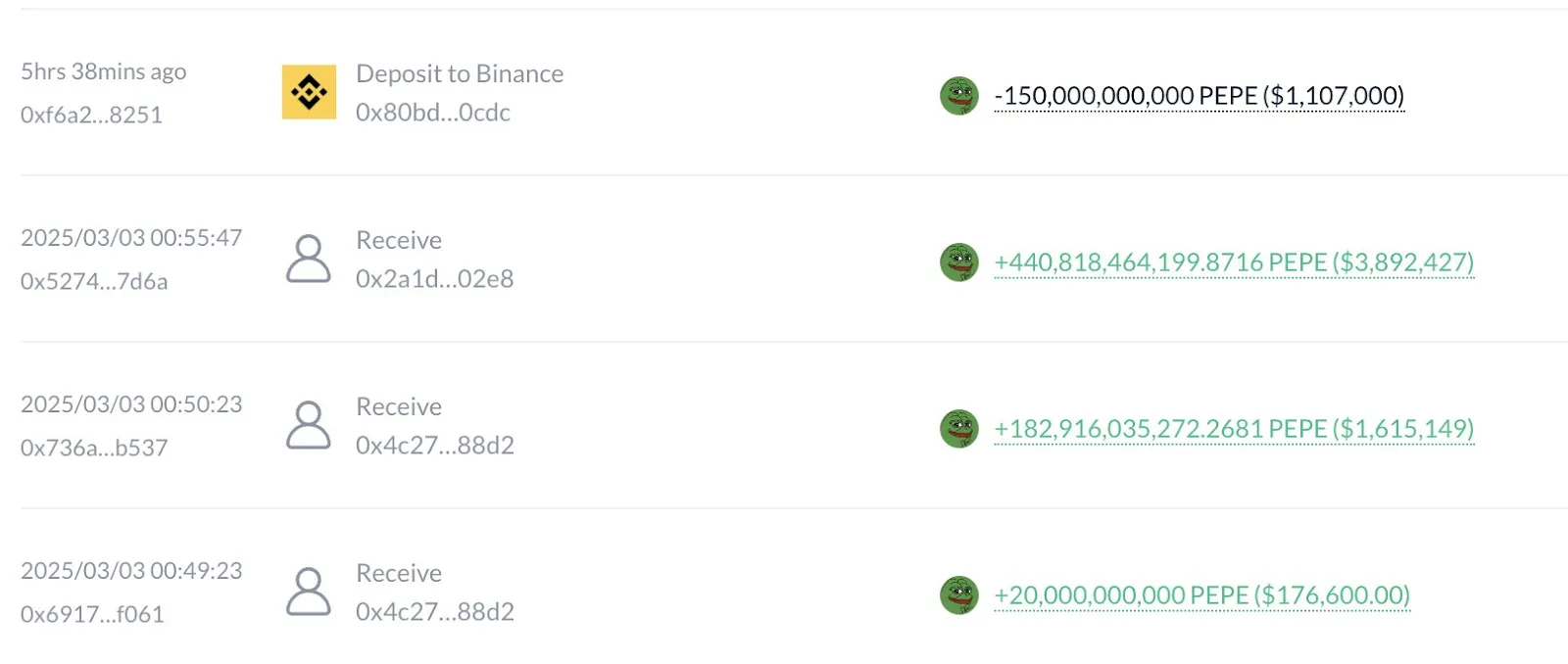
Background: Despite indications that the memecoin "supercycle" has ended, smart money traders continue to pursue speculative memecoin opportunities, particularly after recent hype cycles linked to Trump-themed tokens.
Key Points:
- Smart money traders tracked on Nansen’s blockchain intelligence platform are still chasing quick memecoin returns, even as broader market sentiment cools.
- The recent meme surge led to some impressive profits, such as a trader turning $2,000 into $43 million with Pepe (PEPE), despite the token falling 70% from its all-time high.
- The Trump memecoin launch (TRUMP) in January marked a potential end to the supercycle, with active wallets on Pump.fun dropping from 2.85 million to 1.44 million by March 31.
- Market sentiment has shifted amid global economic uncertainty and unverified insider trading reports linked to high-profile tokens like $MELANIA and $LIBRA.
- The TRUMP token itself has lost 87% of its value since peaking at $75.35 in January.
Key Takeaway: While the memecoin hype appears to be fading, smart money remains active, leveraging short-term opportunities even as the broader market sentiment declines.
EigenLayer to Enable Mainnet Slashing on April 17
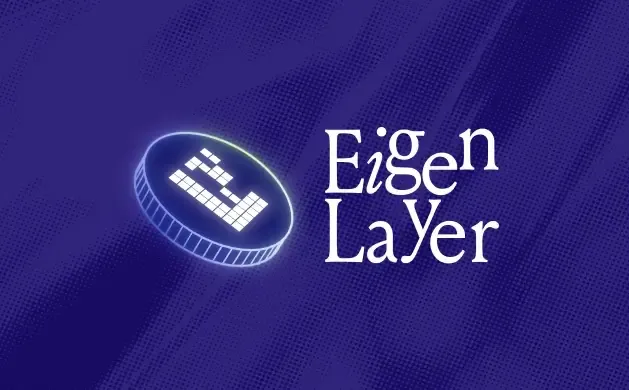
Background: EigenLayer, an Ethereum restaking protocol, will activate mainnet slashing on April 17, allowing the protocol to penalize operators for poor service or malicious actions.
Key Points:
- Slashing Activation: Operators who run nodes and validate transactions will be held accountable, with penalties for malicious behavior or inadequate performance.
- Restaking Mechanism: EigenLayer allows ETH tokenholders to restake their staked ETH to secure third-party services, earning additional yield while being exposed to slashing risks from both the original validator and the EigenLayer operators.
- AVS Integration: The protocol secures Actively Validated Services (AVS), including those in DeFi and gaming, and restakers are subject to slashing if they fail to meet AVS conditions.
- Marketplace Dynamics: Operators will not be automatically opted in to AVSs they are currently running. Once slashing is activated, users must wait 14 days before withdrawing restaked tokens, allowing AVSs to review and slash if necessary.
- Protocol Growth: EigenLayer, with $8.3 billion TVL, is DeFi’s third-largest protocol according to DeFiLlama.
Key Takeaway: EigenLayer’s mainnet slashing marks a significant step in enhancing accountability and security within the restaking ecosystem, creating a marketplace where operators earn rewards while AVSs can launch verifiable, accountable services.
PayPal Expands Crypto Offerings for 200 Million U.S. Users

Background: PayPal has added support for Solana (SOL) and Chainlink (LINK), enabling over 200 million U.S. users to buy, sell, and hold these cryptocurrencies directly from their accounts.
Key Points:
- New Additions: Users can now trade SOL and LINK directly on PayPal and Venmo, eliminating the need to purchase through MoonPay.
- Expansion Strategy: This update is part of PayPal's ongoing crypto expansion, which already supports five major crypto assets.
- Availability: The new tokens will be available for purchase over the coming weeks, enhancing user convenience.
- Market Impact: The move positions PayPal as a key player in mainstream crypto adoption by integrating more digital assets into its platform.
Key Takeaway: PayPal's addition of Solana and Chainlink reflects its commitment to expanding crypto services, making it easier for users to access and manage digital assets.
Grayscale Files S-1 for Solana ETF on NYSE Arca, Excludes Staking
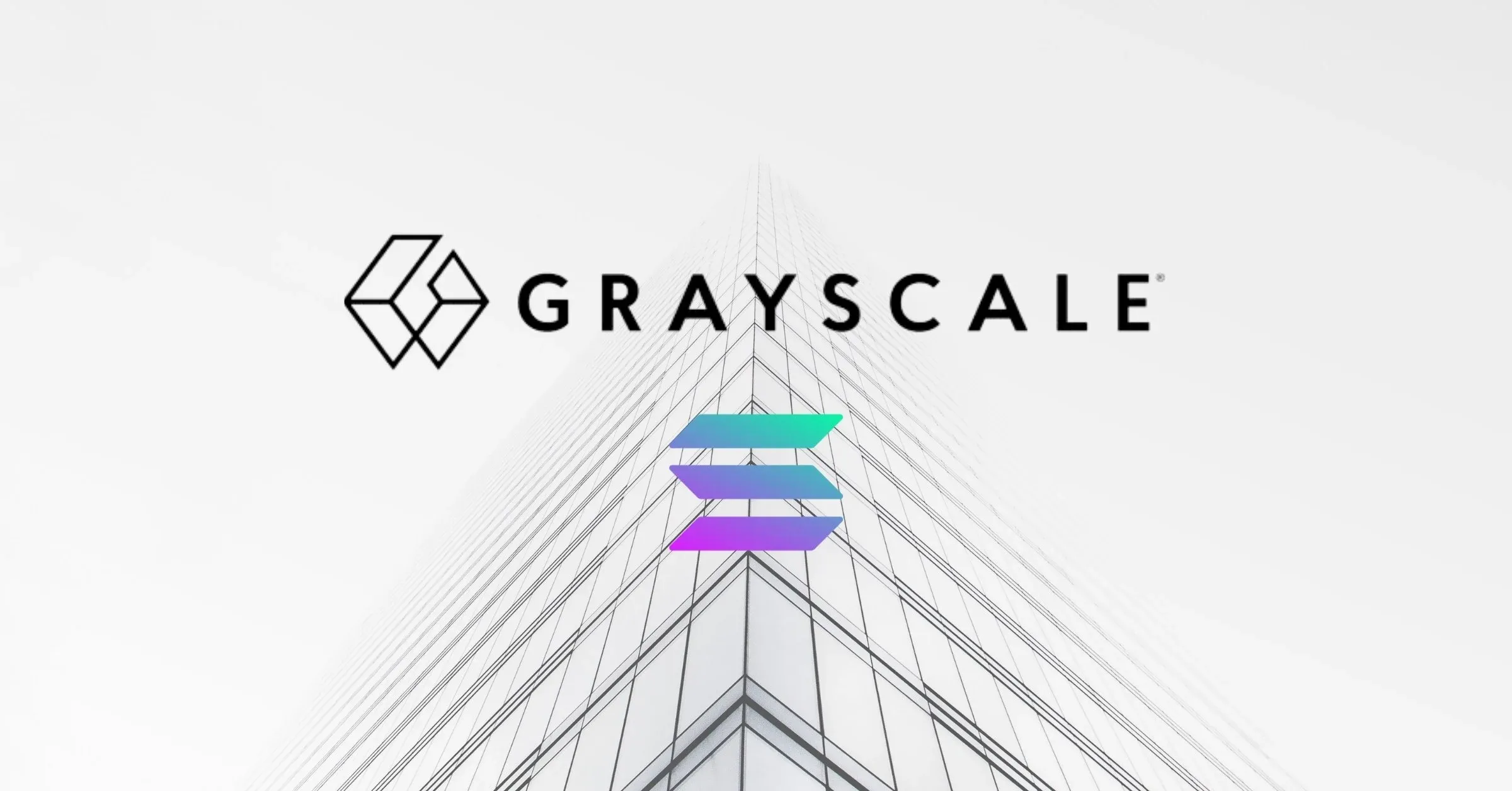
Background: Grayscale Investments has filed an S-1 form with the SEC to convert its Grayscale Solana Trust (GSOL) into a spot Solana ETF, aiming to list it on NYSE Arca.
Key Points:
- The proposed Solana ETF will not include staking functionality, following Grayscale's approach with other spot ETFs like Bitcoin and Ethereum to meet regulatory requirements.
- The filing follows a 19b-4 submission made in December 2024, signaling Grayscale's continued push to expand investor access to cryptocurrencies.
- The move comes amid rising institutional interest in Solana, despite its recent price drop to a 13-month low of $114.50.
- Analysts view the chances of regulatory approval as favorable, considering the SEC’s more crypto-friendly stance under its new leadership and the existing regulated futures market for Solana.
- The filing coincides with Fidelity's recent bid for a spot Solana ETF, reflecting increased competition among institutional players.
Key Takeaway: Grayscale's spot Solana ETF proposal highlights its strategy to capitalize on growing institutional demand while adhering to regulatory standards by excluding staking.
Bitcoin Shows ‘Impressive Resilience’ as Nasdaq Nears Bear Market on China Tariff Dispute
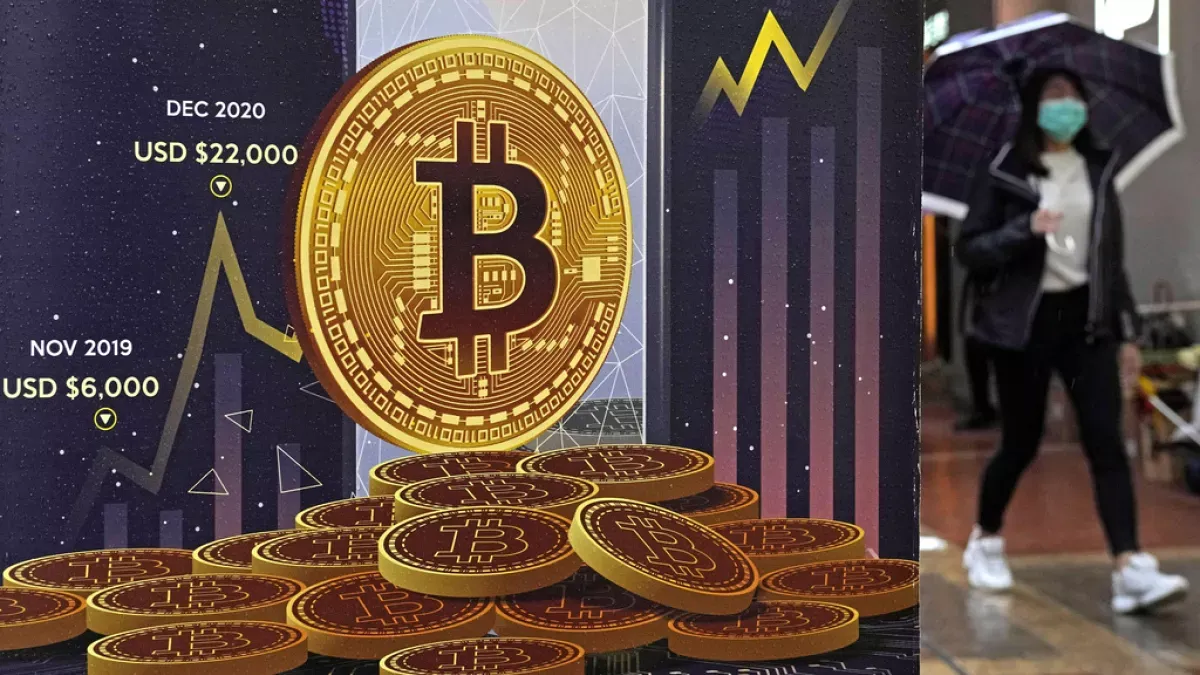
Background: Bitcoin continues to demonstrate resilience, holding above the $80,000 mark, while traditional markets, including the Nasdaq, face pressure amid escalating U.S.-China trade tensions.
Key Points:
- Bitcoin Price Action: Bitcoin traded around $83,000, showing a 1% increase, while major altcoins like XRP and Solana rose 6% and 4%, respectively.
- Trade War Impact: China announced a 34% import tax on U.S. products, while Trump imposed additional 34% tariffs on top of an existing 20% duty on Chinese goods.
- Economic Reaction: The S&P 500 fell 5% this week, and the Nasdaq is close to a bear market as trade-driven earnings concerns loom.
- Expert Insight: Despite strong job growth in March, analysts warn that Trump’s tariff measures may have a longer-term negative economic impact, overshadowing positive labor data.
- Market Sentiment: According to 21Shares' David Hernandez, Bitcoin’s stability amidst market turmoil reflects investor confidence in crypto as a hedge against macroeconomic instability.
Key Takeaway: As traditional markets react negatively to U.S.-China trade conflicts, Bitcoin’s steady performance highlights its potential role as a resilient asset during economic uncertainty.
Aave Founder's SocialFi Protocol Lens Launches Mainnet with 650K Users
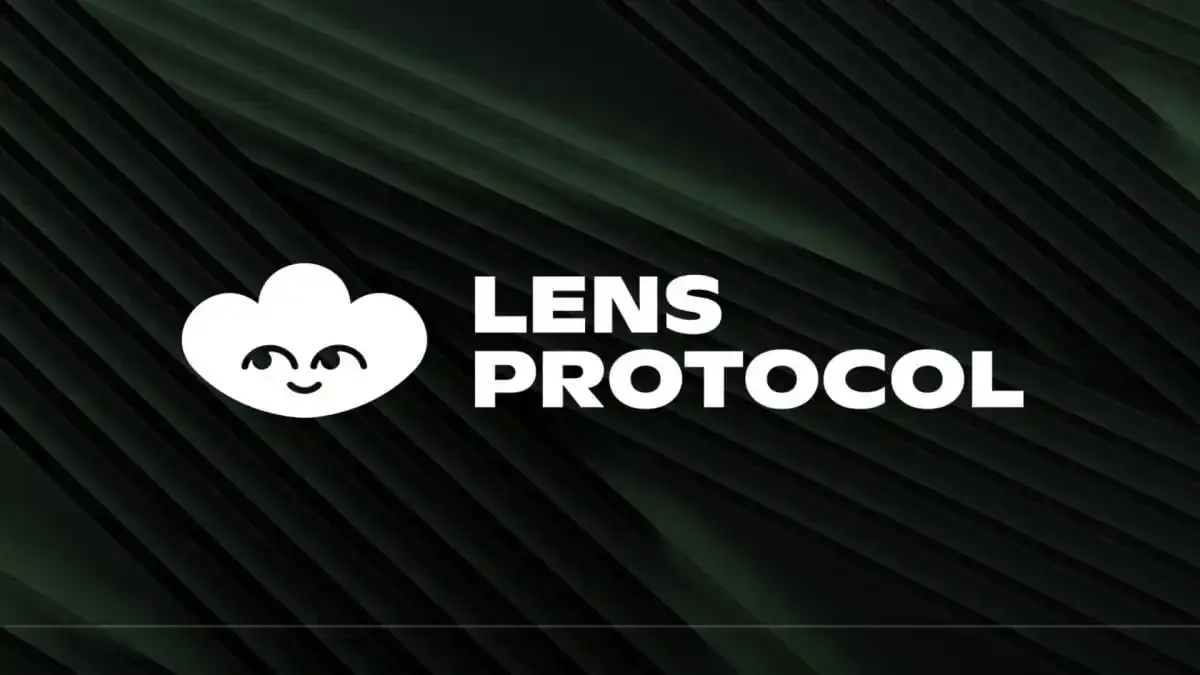
Background: Lens Protocol, a decentralized SocialFi ecosystem led by Aave founder Stani Kulechov, has launched its mainnet on Lens Chain, moving from Polygon to its own Ethereum Layer 2 (L2).
Key Points:
- Migration Details: The transition involved moving 12 million posts, 28 million social connections, and 650,000 users, totaling over 125 GB of data.
- Scalability and Cost Efficiency: Lens Chain utilizes ZKsync for rollup scalability and Avail for data availability, offering secure, cost-effective, and censorship-resistant transactions.
- Transaction Fees: Uses Aave’s GHO stablecoin for near-zero gas fees, making it one of the first L2s to adopt the GHO gas token framework.
- Ecosystem Growth: Web3 social apps moving to or expanding on Lens Chain include Orb (decentralized alternative to X/Instagram), Hey (open social networking DApp), and Socially (Web3 LinkedIn).
- Funding and Development: Lens raised $31 million in a December funding round, backed by Faction, Lightspeed, Circle, Consensys, DFG, Foresight Ventures, and Wintermute Ventures.
Key Takeaway: Lens Chain’s mainnet launch marks a significant milestone in decentralized social media, leveraging scalability and low-cost transactions to attract mainstream adoption
Lazarus Group Profits $2.5 Million from WBTC Sales Amid $6 Billion Crypto Theft

Background: North Korean hackers, particularly from the Lazarus Group, have reportedly gained $2.5 million from recent Wrapped Bitcoin (WBTC) sales. This is part of a larger trend where North Korea has stolen over $6 billion in cryptocurrencies over the past decade to fund its nuclear weapons program.
Key Points:
- Profit from WBTC Sales: The Lazarus Group profited $2.5 million through the sale of WBTC obtained via cyber attacks.
- Long-Term Crypto Theft: Over the past decade, North Korea has stolen more than $6 billion in cryptocurrencies, funding its nuclear weapons development.
- Sophisticated Tactics: Investigators note that Lazarus hackers are both patient and strategic, using methods like social media monitoring to devise scams.
- Decades of Cyber Expertise: The North Korean regime has built extensive cyber capabilities, with a complex network focused on supporting nuclear ambitions.
Key Takeaway: The Lazarus Group’s WBTC sales highlight the ongoing threat of state-sponsored crypto theft, as North Korea continues to leverage stolen digital assets to finance its nuclear program.
Justin Sun’s Allegations of FDUSD Insolvency Cause 9% Depeg

Background: FDUSD, a Binance-affiliated stablecoin, depegged to $0.91 after Justin Sun, founder of Tron, tweeted allegations of insolvency against First Digital, the stablecoin's issuer. The incident led to a $200 million market cap loss, though the peg has since recovered.
Key Points:
- Sun’s Allegations: Justin Sun accused First Digital of being insolvent and unable to redeem client funds, citing a lawsuit by Techteryx against First Digital’s CEO for mismanagement of reserves.
- Market Impact: The tweet caused FDUSD to temporarily depeg by 9%, dropping from $1 to $0.91.
- First Digital’s Response: The firm called Sun’s statements a "smear campaign", asserting that FDUSD is completely solvent and announcing plans for legal action to protect its reputation.
- Aave’s Reaction: In response to the controversy, Aave froze FDUSD depositing and borrowing on its BNB Chain deployment.
- Market Dynamics: Binance holds 95% of the FDUSD supply, emphasizing the token's centralization risk.
Key Takeaway: Despite Sun’s allegations, FDUSD’s peg has stabilized, but the event underscores the inherent risks of centralized stablecoins and the potential for market instability due to public statements from influential figures.
Trump Imposes 10% Tariff on All Countries, Reciprocal Levies on Trading Partners
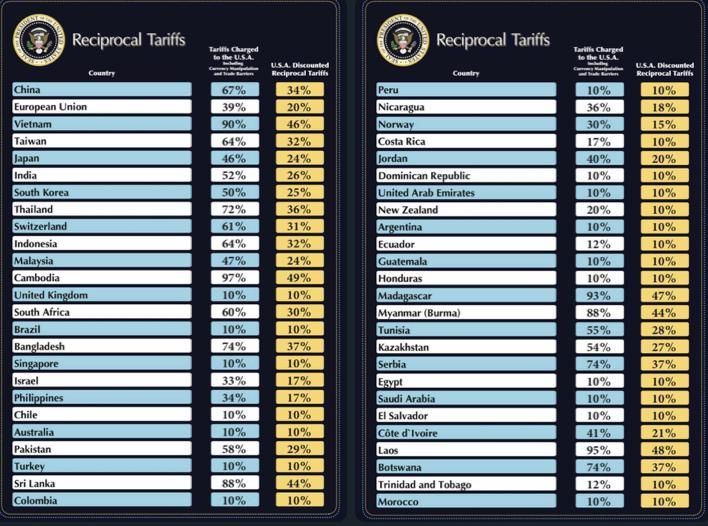
Background: President Donald Trump signed an executive order imposing a 10% baseline tariff on all imports from every country and introducing reciprocal tariffs based on the trade levies imposed on U.S. goods by other nations.
Key Points:
- Reciprocal Tariffs: The U.S. will set tariffs at half the rate that trading partners impose on American goods (e.g., a 34% tariff on Chinese products if China applies a 67% tariff on U.S. imports).
- Automobile Imports: A flat 25% tariff will be imposed on all automobile imports.
- Economic Rationale: Trump argues that tariffs will return the U.S. to economic prosperity, reminiscent of the 18th and 19th centuries when tariffs were the primary revenue source.
- Tax Reform Proposal: Trump proposes eliminating the IRS and funding the federal government exclusively through tariff revenue, potentially saving taxpayers $134,809 to $325,561 over their lifetimes.
- Support from Commerce Secretary: Howard Lutnick supports the move, suggesting it could protect American workers and strengthen the economy while reducing the government's financial dependence on its citizens.
Key Takeaway: The new tariff policy reflects Trump’s vision of economic protectionism, aiming to revitalize the U.S. economy by replacing income taxes with trade tariffs.
HBAR Foundation Joins OnlyFans Founder Startup to Bid on TikTok

Background: HBAR Foundation and Zoop, a social app by OnlyFans founder Tim Stokely, have submitted a joint bid to acquire TikTok in the United States. The move follows a legal requirement for ByteDance to divest its ownership of TikTok or face a potential ban starting April 5.
Key Points:
- Acquisition Intent: The bid aims to secure TikTok’s presence in the U.S. and restructure ownership to benefit creators and their communities.
- Competing Bids: Other major tech companies, including Amazon, Oracle, Microsoft, and Rumble, have also shown interest in acquiring TikTok.
- Legal Context: A law signed by former President Joe Biden in 2024 mandates ByteDance to divest TikTok or face a ban. President Trump extended the deadline to April 5.
- Strategic Vision: Zoop co-founder RJ Phillips stated that the bid is about creating a new paradigm where creators benefit from the value they generate.
- Uncertain Future: It remains unclear whether Trump will allow more time for the sale or proceed with the ban after April 5.
Key Takeaway: The HBAR Foundation and Zoop’s bid signals an effort to maintain TikTok’s operations in the U.S. while focusing on a creator-centric ownership model. The outcome depends on how the Trump administration proceeds with the mandated divestment.
Sonic TVL Crosses $1 Billion

Background: Sonic, formerly known as Fantom, has reached a major milestone as its Total Value Locked (TVL) surpasses $1 billion, marking consistent growth since the chain’s mainnet launch.
Key Points:
- TVL Milestone: Sonic's TVL increased by 6% over the past week, reaching $1.04 billion, making it the 12th largest blockchain, just behind Aptos ($1.07 billion).
- User Activity: Sonic recorded an average of 57,000 Daily Active Users (DAU) over the past week, approaching the all-time high of 67,000 DAU seen in mid-December.
- Growth Drivers: The growth is driven by an incentives program offering 190 million S tokens (worth $95 million) to users and developers, distributed based on Sonic points earned through ecosystem participation.
- Token Performance: Despite rising activity, the S token is down 26% over the last 30 days, impacted by the broader altcoin market downturn.
Key Takeaway: Sonic’s TVL surpassing $1 billion highlights the platform’s steady growth and user engagement, though the S token’s performance remains affected by market conditions.
First $TRUMP Memecoin Unlock Set for April 18, Releasing 40 Million Tokens
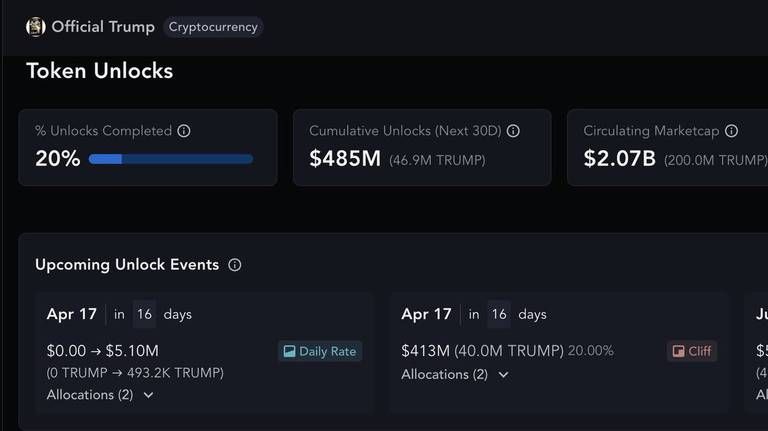
Background: The first major unlock for the $TRUMP memecoin, associated with U.S. President Donald Trump, is set for April 18, 2025, releasing 40 million tokens worth $431 million.
Key Points:
- Unlock Details: The event will release 40 million $TRUMP tokens, representing 20% of the circulating supply.
- Market Impact: The unlock is expected to raise the circulating market cap to $2.5 billion.
- Price Speculation: The token’s value has seen a price increase leading up to the unlock, amid speculation about potential volatility.
- Community Concerns: Investors are closely monitoring whether the increased supply will trigger selling pressure or sustain the current upward momentum.
Key Takeaway: The $TRUMP memecoin unlock on April 18 could significantly impact the token’s market dynamics, with potential for price volatility as 20% of the supply enters circulation.
Tether Acquires 8,888 BTC for $735M, Now Holds 100,521 BTC

Background: Tether, the issuer of USDT, has acquired an additional 8,888 Bitcoin valued at approximately $735 million in Q1 2025, increasing its total BTC holdings to 100,521.
Key Points:
- Strategic Acquisition: The purchase aligns with Tether’s policy of allocating 15% of quarterly profits to Bitcoin, initiated in May 2023.
- Market Position: Tether now ranks as the sixth-largest Bitcoin holder globally, with its BTC holdings valued at $8.29 billion.
- Profitability: The acquisition contributes to Tether’s unrealized profit of $3.86 billion, as the latest purchase increased its total holdings from 92,647 BTC to 100,521 BTC.
- Source: The BTC was acquired from Bitfinex, consolidating Tether’s commitment to diversifying reserves.
Key Takeaway: Tether's strategic Bitcoin acquisition reinforces its approach to reserving assets, solidifying its position as a major BTC holder in the crypto space.
Binance Launches CEX-to-DEX Trading With Binance Wallet and Binance Connect Integration

Background: Binance has introduced a new feature that allows seamless CEX-to-DEX trading via the Binance Wallet, bridging centralized and decentralized trading.
Key Points:
- Integration: The feature enables users to trade on DEXs directly from their Binance Exchange accounts, eliminating the need for manual transfers or asset bridging.
- Supported Assets: Includes stablecoins like USDC and tokens such as $CPOOL, compatible with Ethereum, Solana, Base, and BNB Smart Chain.
- Enhanced Utility: Integrates with Binance Alpha for access to emerging tokens and Binance Connect for fiat-to-crypto transactions.
- User Experience: Aims to simplify trading and reduce technical barriers, addressing key challenges in the crypto space.
Key Takeaway: Binance's CEX-to-DEX trading feature significantly improves user convenience by offering direct trading between centralized and decentralized platforms, reinforcing Binance’s role as a comprehensive crypto ecosystem.
Multiple Altcoins Suddenly Crash on Binance, ACT Loses 50% in Minutes
Background: A sudden and significant crash hit several altcoins on Binance, including ACT, which lost 50% of its value within minutes. The exact cause was initially unclear, prompting speculation about market manipulation and technical issues.
Key Points:
- Affected Tokens: Major drops were recorded in ACT, DEXE, DF, KAVA, HIPPO, BANANAS31, LUMIA, TST, and QUICK.
- Trigger: Binance confirmed that four users - including three VIP users - sold nearly $1 million worth of ACT coins, causing selling pressure and triggering liquidations.
- Market Impact: The ACT price drop also led to futures liquidations and impacted other low-cap tokens, suggesting possible cross-asset contagion.
- Market Maker Involvement: Data indicated that Wintermute, a market maker, sold a significant amount of ACT tokens, possibly due to margin adjustments on Binance’s leverage-trading platform.
Key Takeaway: The sudden crash highlights the volatility risks associated with low-cap tokens and the potential for large trades by VIP users to destabilize the market. Binance is conducting an investigation into the full scope of the issue.
Gunzilla Games Launches GUN Token for ‘Off the Grid’ Battle Royale Game

Background: Gunzilla Games has launched the GUNZ blockchain mainnet, hosting the battle royale game Off the Grid. The game, developed in collaboration with Neill Blomkamp, features a player-owned NFT economy integrated with the GUN token.
Key Points:
- Game Launch: Available on Playstation, Xbox, and PC, featuring an in-game NFT economy using GUN tokens.
- Blockchain Integration: The GUNZ blockchain, an Avalanche subnet, is designed specifically for AAA Web3 gaming.
- Economic Model: 30% of gross revenues from Off the Grid will be used to repurchase GUN tokens for player rewards. Validators also earn from NFT minting, Pro subscriptions, and secondary market fees.
- Token Stats: The GUN token has a market cap of $53 million, with only 6% of the supply circulating, giving a fully diluted valuation of $900 million.
Key Takeaway: Gunzilla Games aims to create a scalable Web3 gaming economy with Off the Grid, positioning it as the first blockchain game to achieve mainstream console distribution.
MicroStrategy Acquires 2.6% of Circulating Bitcoin at $67,458 Apiece

Background: MicroStrategy, now operating as Strategy, has announced owning 528,185 BTC, accounting for 2.6% of Bitcoin’s circulating supply. CEO Michael Saylor personally holds an additional 17,000 BTC, making their combined holdings over 2.7% of Bitcoin’s market cap.
Key Points:
- Purchase Details: The average purchase price for all holdings is $67,458 per BTC, with a total cost of $35.6 billion and unrealized profits of $8.4 billion.
- Leverage and Debt: Strategy owes $8.2 billion in US dollar-denominated debts and has obligations to two preferred shareholder series (STRK and STRF).
- Ownership Comparison: Strategy’s BTC holdings are half of Satoshi Nakamoto’s estimated 1.1 million BTC.
- Market Sentiment: Despite the leverage, MSTR shares trade at a 73% premium to the value of its Bitcoin assets.
Key Takeaway: Strategy’s aggressive Bitcoin acquisition strategy solidifies its position as the largest corporate Bitcoin holder, leveraging its premium share price to acquire more BTC despite market volatility.
PumpSwap DEX Nears $2.5 Billion in Trading Volume 10 Days After Launch

Background: PumpSwap, a newly launched DEX by memecoin platform Pump.fun, has reached $2.43 billion in cumulative trading volume just 10 days after launch, positioning itself as a major player in the Solana DEX ecosystem.
Key Points:
- Market Share: PumpSwap is now the second-largest Solana DEX by market share, trailing Raydium but ahead of Meteora and Whirlpool.
- Trading Activity: On Saturday, PumpSwap accounted for 14.5% of total Solana DEX volume, compared to Raydium’s 47.5%.
- Fee Generation: The protocol has generated $20 million in fees, with liquidity providers receiving $5 million.
- User Engagement: Nearly 700,000 wallets have interacted with the DEX, with over 30 million swaps processed.
Key Takeaway: PumpSwap’s rapid growth highlights its potential to rival established Solana DEXs, driven by its memecoin trading focus and streamlined migration from Pump.fun.